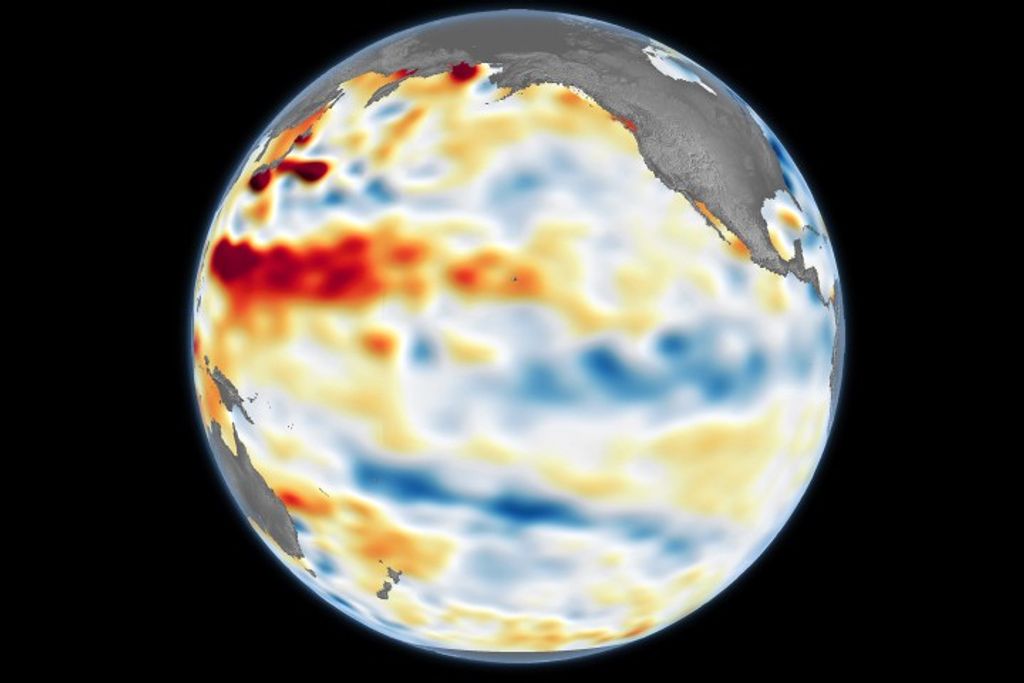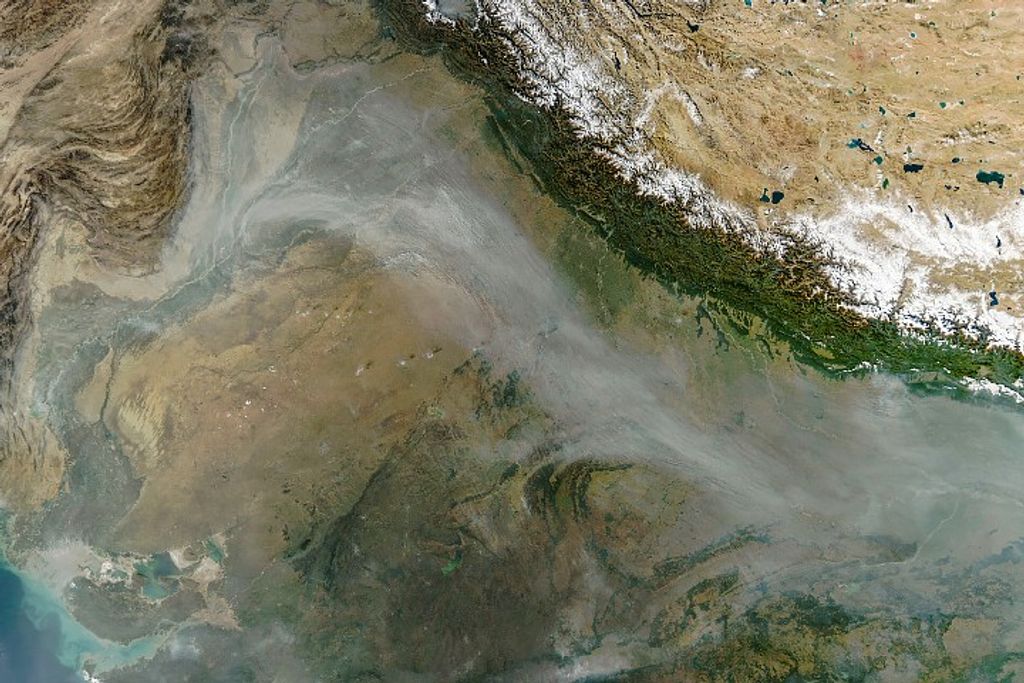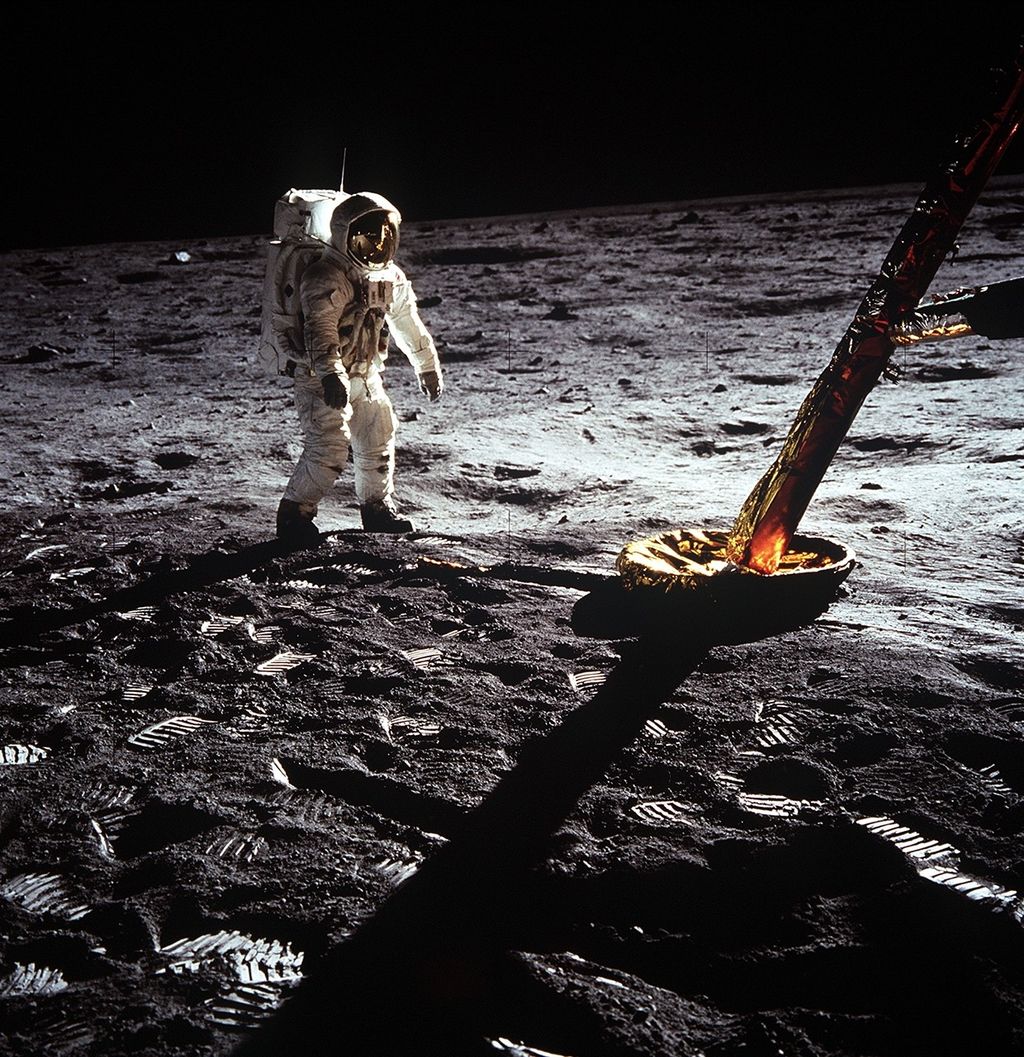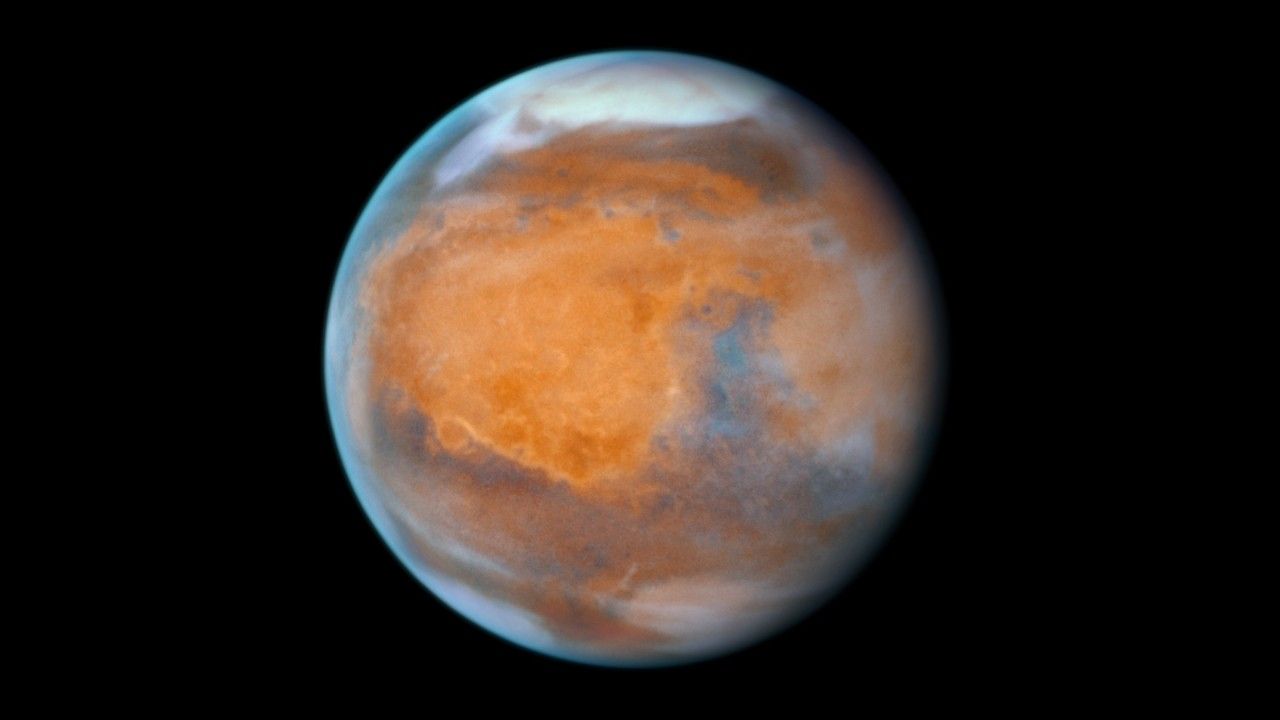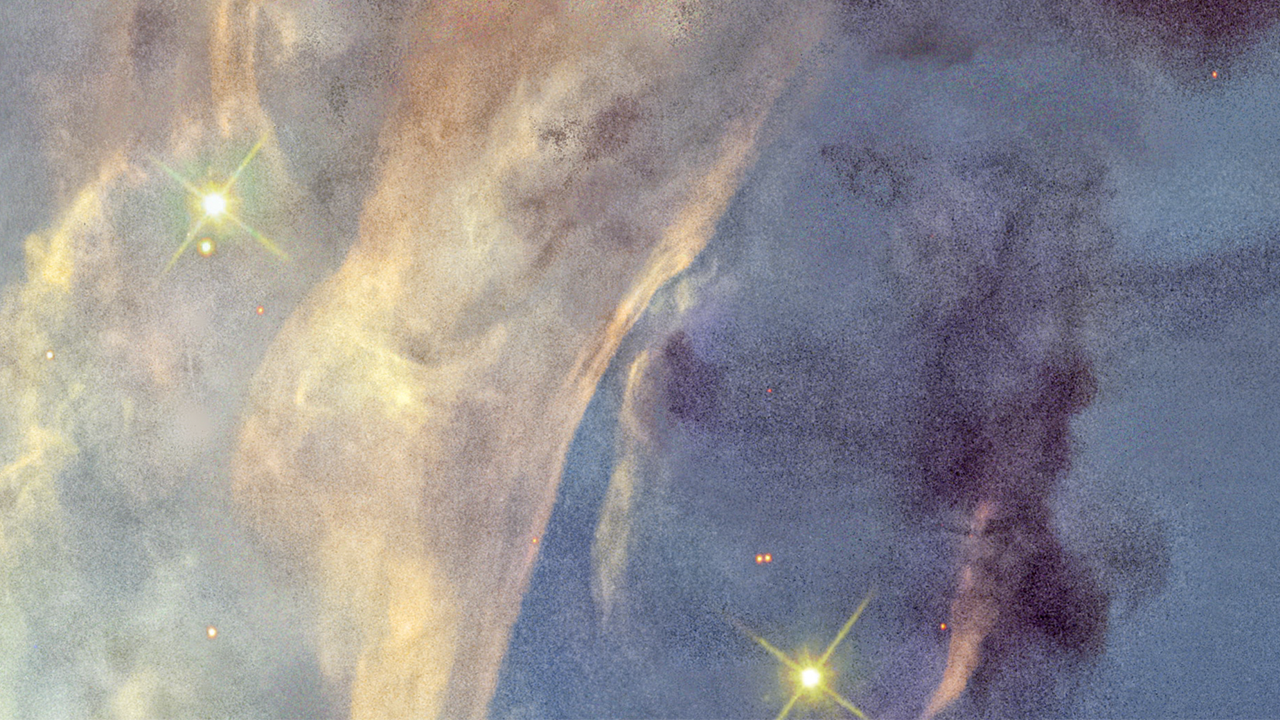1 min read
Planetary Nebula NGC 2899
This video zooms across 6,500 light-years through a star-studding field to visit the planetary nebula NGC 2899, as photographed by the Hubble Space Telescope. The nebula has a diagonal bipolar structure formed by a cylindrical-shaped outflow of hot gasses and radiation from the central star – a blazingly hot white dwarf. The colors are from glowing hydrogen, oxygen, and nitrogen. The video zooms up on a forest of stalagmite-shaped features that are being eroded away by the energy from the sizzling white dwarf. They point back to the star’s central location. The stalks lie along the inner edge of a doughnut-shaped torus of gas and dust partially encircling the star. The stars in the visualization are presented in their approximate 3D locations in space as mapped from various sky surveys: Gaia, Hipparcos, Yale, and Gliese star catalogs.
- Release DateApril 23, 2025
- Science ReleaseEye on Infinity: NASA Celebrates Hubble’s 35th Year in Orbit
- CreditVideo: NASA, ESA, STScI, GAIA, DPAC, Gregory Bacon (STScI), Joseph DePasquale (STScI), Leah Hustak (STScI), Danielle Kirshenblat (STScI), Christian Nieves (STScI), Frank Summers (STScI)
Related Images & Videos

Mosaic of Hubble 35th Anniversary Targets
A selection of photogenic space targets to celebrate the 35th anniversary of NASA's Hubble Space Telescope. Upper left: Mars. Upper right: planetary nebula NGC 2899. Lower left: a small portion of the Rosette Nebula. Lower right: barred spiral galaxy NGC 5335.

Rosette Nebula Context Image
The Rosette Nebula is a vast star-forming region, 100 light-years across, that lies at one end of a giant molecular cloud. The background image is from the Digitized Sky Survey, while the inset is a small portion of the nebula as photographed by the Hubble Space Telescope.
Share
Details
Claire Andreoli
NASA’s Goddard Space Flight Center
Greenbelt, Maryland
claire.andreoli@nasa.gov









